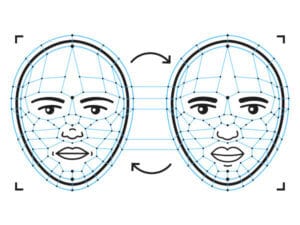There are many reasons to be concerned about the upcoming election in the United States, but none greater than the rise of the “deepfake” fabricated or doctored video that appears real, but that shows someone doing something they never did.

Silicon Valley folks know that the tools they create will be misused, but the forms that misuse might take are legion. Even where we can predict malicious behavior, it’s often impossible to prevent without completely undermining their overall benefits (which are themselves often impossible to anticipate, by the way).
When it comes the potential for deepfakes to subvert our elections, though, the danger is easy to see. Most Americans have not yet developed the skepticism of video that the times demand. When we watch a video, we tend to believe what we hear and see. And we very often share it.
The task of protecting democracy belongs to all of us, but those who create these new tools for creating and disseminating content have a special responsibility. Last year, Adobe and Twitter partnered with The New York Times on an effort to address the dangers of deepfakes using content tracing authentication: Making it clear who created a video or photo, and any changes that have been made. These companies and others have also been working to develop tools and policies for limiting the spread and influence of deceptive content.
They’re on the right track. A first step for combating deepfakes is knowing what content is legitimate and what is not. The second is containing the malicious content. Both of these steps are enormously challenging. Bad actors are continuously adapting to get around new detection technology, and social media platforms have struggled to fight disinformation while preserving free expression. Moreover, identifying fake content and taking action on it take time – time that allows viral videos to wreak havoc.
In the short term – and for purposes of the 2020 elections – the fight against deepfake attacks on American democracy will be won or lost by us: All of us who consume online media. When it comes to video, we need to be skeptics. We need to recognize that bad actors, foreign and domestic, are going to try to manipulate us using deceptive video.
Efforts to raise public consciousness about the threat posed by deepfakes have been precious few. In 2018, Buzzfeed fabricated a delightful video of former President Barack Obama as a warning of how powerful these deceptions can be. Last month, MIT’s Center for Advanced Virtuality released a remarkably convincing news clip of a speech President Nixon never gave – one prepared for him in the event that Neil Armstrong, Buzz Aldrin and Michael Collins had been lost on their July 1969 mission to the moon. In perhaps the strongest move yet by a tech company in defense of the 2020 elections, Microsoft announced earlier this month a bevy of partnerships designed to buttress the public against the threat of deepfakes.
There remains much to be done to make our democracy resilient to deepfake attacks. Today we at the Silicon Valley Leadership Group Foundation, together with the CITRIS Policy Labs at the University of California, are putting our shoulder to the wheel, announcing the 2020 Deepfake Education Competition.
We are seeking student submissions of educational videos about deepfakes that will inform the public and help them develop a healthy skepticism of video content. The competition is open to currently enrolled high school students, undergraduates and graduate students. Winners will be announced on October 21st, and will receive both cash prizes and exposure across Silicon Valley Leadership Group Foundation and CITRIS media channels. The deadline for submissions is October 12th.
For the complete list of video submission criteria and to upload submissions, please visit https://www.svlg.org/deepfake-education-competition/.
Go to work, friends. Give it your best, and know that you are doing it in defense of the Common Good.
– Brian Brennan, Senior Vice President, Investor Relations, State & Federal Coalitions | September 14, 2020
